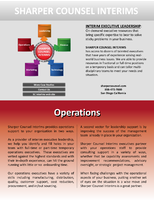EPA takes next step to implement 2008 ozone standards.
Share:
Press Release Summary:
Working with states and tribes, EPA is identifying areas that meet or do not meet 2008 air quality standards for ground-level ozone, known as smog. EPA has determined that 45 areas, including 2 areas of Indian country, are not meeting 2008 standards based on certified air quality data. Almost all of these already have programs in place to improve air quality because they did not meet 1997 smog standards. Only 3 areas will be identified for first time as not meeting smog standards.
Original Press Release:
EPA Takes Next Step to Implement 2008 Ozone Standards
Most areas that need to take steps to reduce ozone pollution are close to meeting the standards; only three new areas have been added
WASHINGTON - Working closely with states and tribes, the U.S. Environmental Protection Agency (EPA) is identifying areas that meet or do not meet the 2008 air quality standards for ground-level ozone, known as smog. The agency's approach to implementing these standards will improve air quality, protect public health, increase certainty for states and tribes, maximize flexibilities and minimize the burden on state, tribal and local governments. Breathing air containing high levels of smog can reduce lung function and increase respiratory symptoms, aggravating asthma or other respiratory conditions. Ozone exposure may also contribute to premature death, especially in people with heart and lung disease.
In 2008, EPA set new smog standards at 75 parts per billion. Working with states and tribes and following an open public process that included a 45-day public comment period, EPA has determined that 45 areas across the country, including two separate areas of Indian country, are not meeting the 2008 standards based on the most recent certified air quality data. Almost all of these areas already have programs in place to improve air quality because they did not meet the 1997 smog standards. Only three areas will be identified for the first time as not meeting smog standards. Reflecting ongoing improvements in air quality, EPA is identifying fewer areas that do not meet the 2008 standards than the agency identified as not meeting the 1997 standards.
Reducing smog and improving air quality is a shared responsibility of federal, state, local and tribal governments. National clean air programs such as EPA's standards to reduce power plant emissions that cross state lines, clean vehicle and fuel standards, and more locally focused state, tribal air quality programs are already contributing to air quality improvements. These actions will help areas meet the standards and protect public health. In addition, EPA expects that most areas would be able to meet the 2008 standards as a result of recent and pending rules.
The Clean Air Act requires EPA to review and, if necessary, revise air quality standards every five years to ensure that they protect public health with an adequate margin of safety. Following a change in standards, EPA works with states and tribes as appropriate to identify areas that do not meet the standards and establish plans to improve air quality. EPA continues to work to review the science needed to inform the next five-year review of the smog standards and currently expects to propose action in 2013.
More about final designations throughout the country: www.epa.gov/ozonedesignations/2008standards/index.htm




